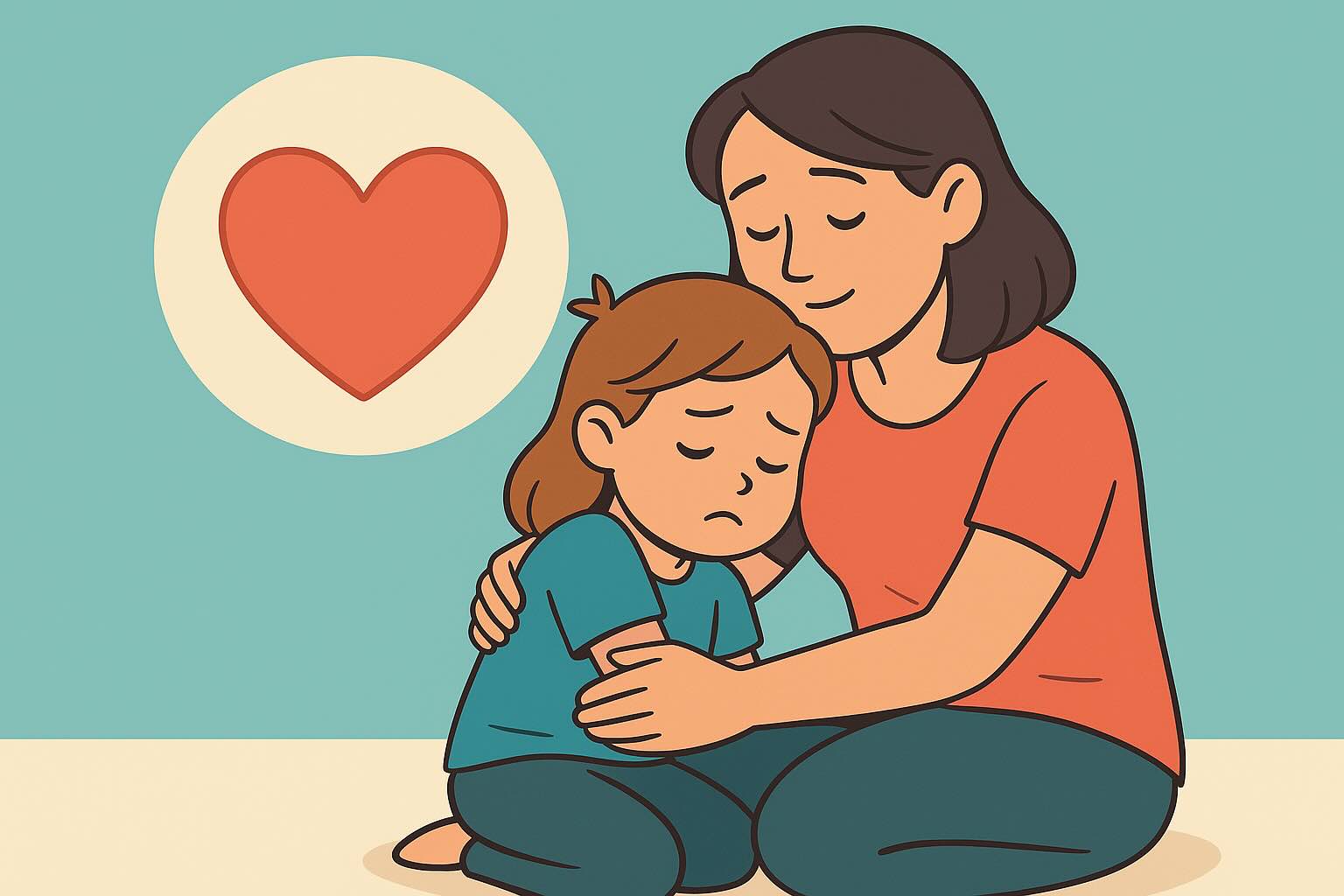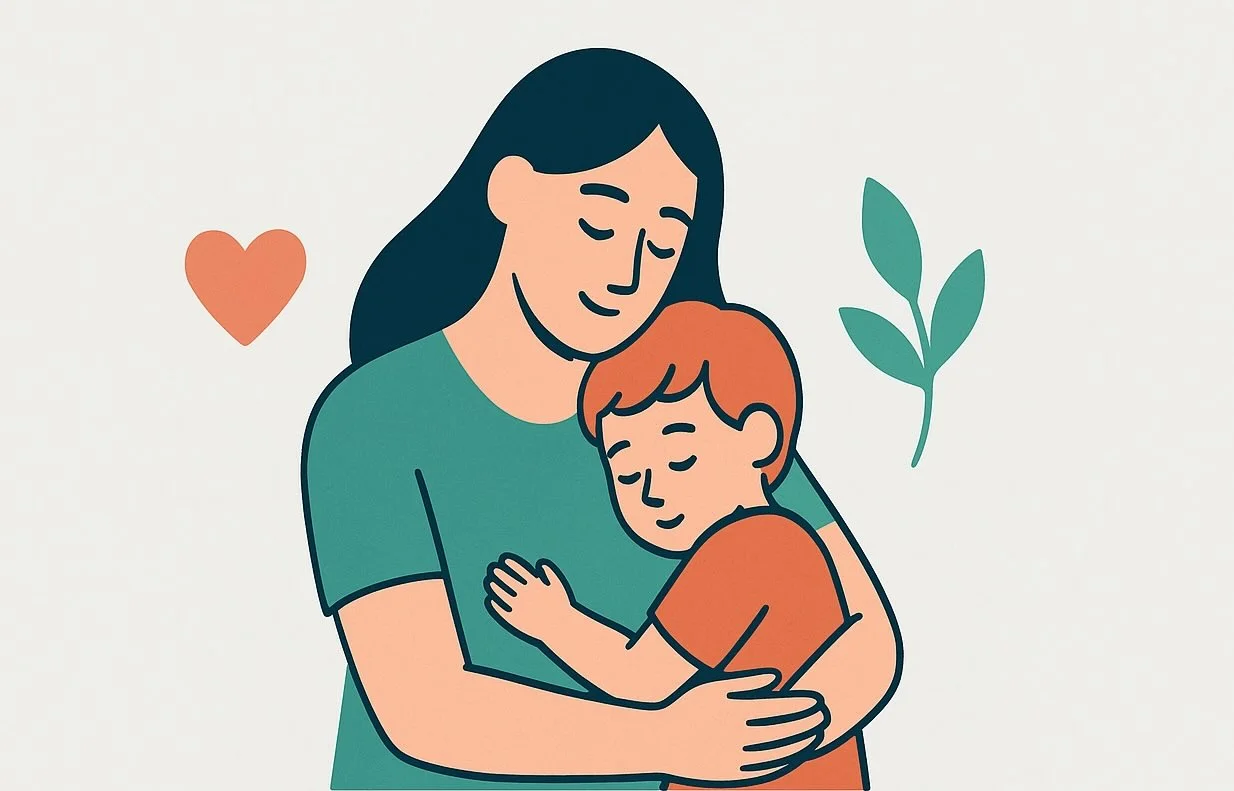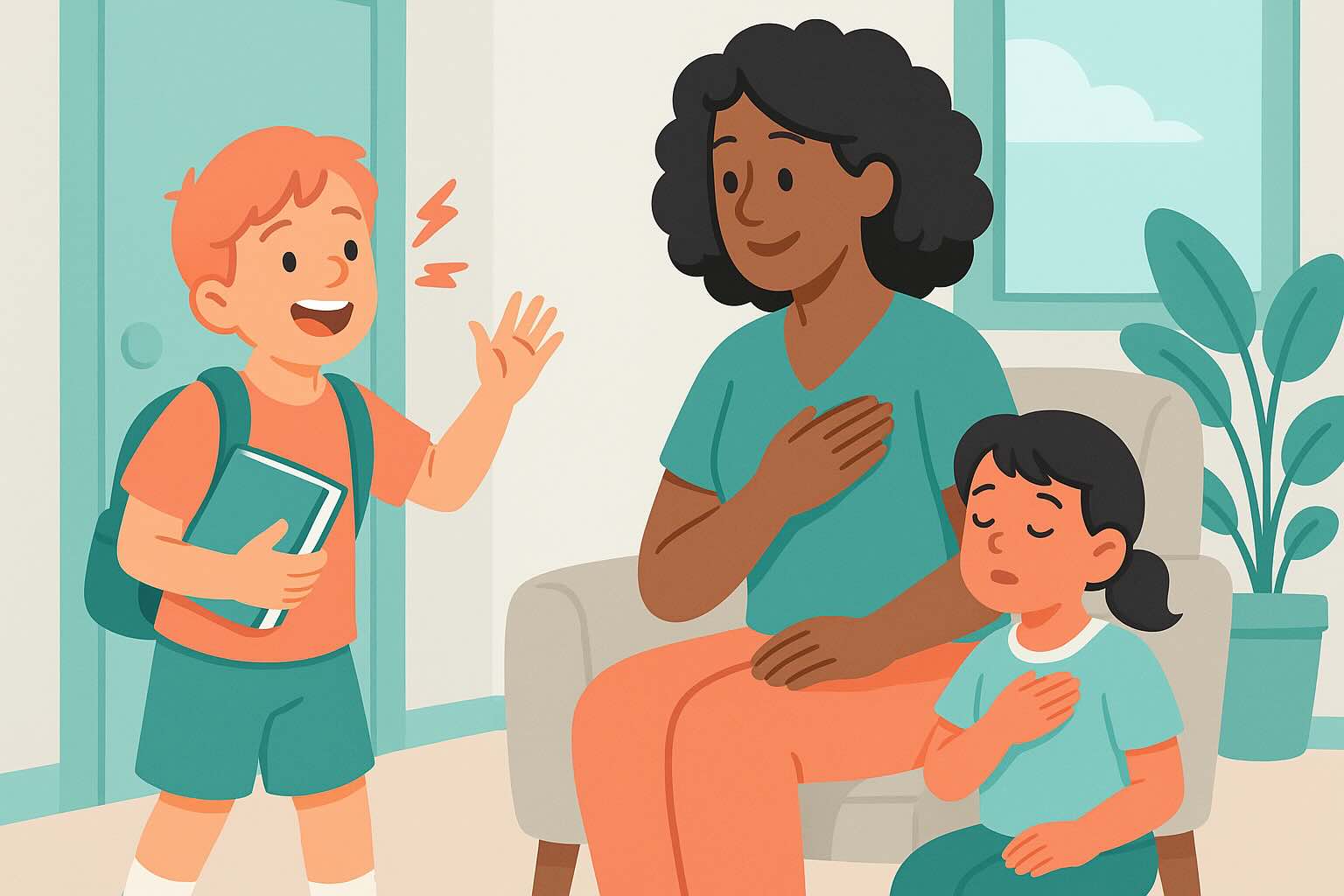Building Emotional Safety: 8 Strategies for Stronger Bonds


Emotional Safety First: How to Create the Security Your Child Needs to Thrive
Creating the Foundation for Everything Else
In a world that often focuses on behavior, performance, and compliance, we sometimes forget the most important ingredient for healthy child development: emotional safety. Without this psychological foundation, children struggle to learn, grow, and reach their full potential.
Emotional safety is your child's deep, unshakeable knowing that they are loved, accepted, and valued—not for what they do, but for who they are. It's the feeling that it's safe to make mistakes, have big feelings, and be authentic without fear of rejection or criticism.
This comprehensive guide will show you how to create the foundation of emotional safety that allows your child to flourish. For related foundations, also see our guides on connection before correction and building cooperation without rewards.
What You'll Learn in This Guide
- What emotional safety is - Definition and why it's crucial
- The neuroscience of safety - How the brain develops when it feels secure
- Signs of emotional insecurity - Signals to watch for
- Building a secure emotional base - Practical daily strategies
- Boundaries with safety - How to create structure without fear
- Repair after mistakes - Rebuilding trust after difficult moments
- Age-appropriate approaches - What 3-4 vs. 5-7-year-olds need
- Long-term impact - How emotional safety shapes lives
Estimated reading time: 13 minutes
What Emotional Safety Really Means
Understanding the Definition
Emotional safety IS:
- Feeling unconditionally loved and accepted
- Knowing that all feelings are welcome, even if not all behaviors are allowed
- Trusting that parents will be there even when things get difficult
- Safety to be authentic and vulnerable without fear of rejection
- Knowing that mistakes are learning opportunities, not reasons for shame
Emotional safety is NOT:
- Permissive parenting without boundaries or expectations
- Protecting the child from all disappointments or negative emotions
- Always saying yes or fulfilling every desire
- Never letting the child feel frustrated or upset
- Avoiding conflict or challenges
The Emotional Safety Scale
Children with high emotional safety:
- Share both positive and difficult experiences with their parents
- Recover relatively quickly from setbacks
- Are willing to try new things and take risks
- Can regulate their emotions with support
- Show empathy and care for others
- Feel comfortable asking for help
Children with low emotional safety:
- Hide their true feelings or struggles
- Have excessive fear of mistakes or failure
- Show extreme people-pleasing behavior or withdrawal
- Have difficulty with emotional regulation
- May be aggressive or withdraw when feeling threatened
- Avoid challenges or new experiences
The Neuroscience of Emotional Safety
How Secure Brains Develop
When children feel emotionally safe:
- Their prefrontal cortex (thinking and learning center) can develop properly
- Stress hormones stay in healthy ranges
- They can access higher brain functions like creativity and problem-solving
- Their nervous system remains regulated and calm
- They develop secure attachment patterns that last a lifetime
When children feel emotionally unsafe:
- Their brain remains trapped in survival mode
- Chronic stress hormones impair learning and memory
- Brain development can be delayed or altered
- They develop insecure attachment patterns
- Emotional regulation becomes harder to develop
The Stress Response System
Children's nervous systems are designed to detect:
- Am I safe?
- Am I loved?
- Can I make mistakes and still be accepted?
- Will my needs be met?
- Can I trust this adult?
When the answers are "yes," the child can:
- Learn and grow
- Develop healthy relationships
- Approach challenges with confidence
- Develop emotional regulation
- Build resilience
When the answers are "no" or "sometimes," the child focuses on:
- Survival and self-protection
- Predicting and avoiding danger
- Managing adult emotions instead of their own
Building Your Child's Emotional Safety Foundation
Strategy 1: Accept All Emotions, Guide Behavior
The Principle: Feelings are always valid; behaviors might need limits.
In Practice:
- "You're really angry that we have to leave the park. Anger is okay. Hitting isn't allowed."
- "I see you're disappointed about dessert. Those feelings make sense. We still need to eat dinner first."
- "It looks like you're scared about school. Fear is normal. Let's talk about what might help."
Why It Works: When children know their emotions won't be rejected or minimized, they learn to trust their internal experiences and share them with you.
Strategy 2: Maintain Connection During Correction
The Principle: Your relationship remains intact even when addressing problems.
In Practice:
- Sit close when discussing behavior issues
- Use warm tone of voice even when setting limits
- Touch their arm or shoulder during difficult conversations
- Say "I love you AND this behavior needs to change"
Why It Works: Children learn that your love isn't conditional on perfect behavior, making them more open to guidance.
Strategy 3: Validate Before Problem-Solving
The Principle: Understanding comes before solutions.
In Practice:
- "That sounds really frustrating" (before offering fixes)
- "I can see why you'd feel left out" (before addressing the conflict)
- "It makes sense you're nervous" (before reassuring)
Why It Works: Validation shows children that their experiences matter and makes them more receptive to help.
Strategy 4: Repair Quickly After Mistakes
The Principle: Human connection can be restored after ruptures.
In Practice:
- "I raised my voice and that felt scary. I'm sorry."
- "I was impatient when you needed help. That wasn't fair to you."
- "I made a mistake when I said that. You didn't deserve those words."
Why It Works: Regular repair shows children that relationships can weather storms and builds trust in your reliability.
Strategy 5: Show Genuine Interest in Their World
The Principle: Your child's experiences matter to you.
In Practice:
- Ask follow-up questions about their interests
- Remember details from previous conversations
- Engage with their imagination and play
- Listen without immediately offering advice or solutions
Why It Works: Interest communicates value and helps children feel seen and important.
Strategy 6: Create Predictable Emotional Responses
The Principle: Children thrive when they can predict safety.
In Practice:
- Respond similarly to similar situations
- Keep your emotional reactions proportionate
- Maintain calm presence during their big emotions
- Follow through consistently on what you say
Why It Works: Predictability helps children's nervous systems stay calm and builds trust in your reliability.
Strategy 7: Offer Choices Within Boundaries
The Principle: Autonomy within safety builds confidence.
In Practice:
- "Would you like to brush teeth first or put on pajamas first?"
- "You can walk to the car or I can carry you"
- "Which consequence feels fair to you for this situation?"
Why It Works: Choice gives children agency while maintaining necessary structure, building both independence and security.
Strategy 8: Practice Unconditional Positive Regard
The Principle: Your child's worth isn't performance-based.
In Practice:
- Express love during difficult behaviors: "I love you even when you're angry"
- Celebrate effort over achievement: "You worked so hard on that"
- Notice character qualities: "You showed such kindness to your sister"
- Affirm their identity: "You are important to this family"
Why It Works: Unconditional love creates the deepest sense of security and allows authentic self-development.
Age-Specific Applications
Ages 3-4: Building Basic Safety
Developmental Considerations:
- Concrete thinking dominates
- Emotions feel overwhelming and uncontrollable
- Strong need for routine and predictability
- Beginning to understand cause and effect
Safety-Building Focus:
- Simple, consistent responses: "You're safe. I'm here."
- Physical comfort during big emotions
- Predictable daily routines
- Clear, simple boundaries with warmth
Language Examples:
- "Your feelings are okay. Your body is safe."
- "I'll stay with you until the scared feeling gets smaller."
- "You can be mad AND we still need to be gentle."
Ages 5-7: Developing Emotional Intelligence
Developmental Considerations:
- Growing ability to understand others' perspectives
- Beginning to internalize emotional lessons
- More complex social situations arise
- Increased capacity for self-regulation
Safety-Building Focus:
- Emotional vocabulary development
- Problem-solving together
- Discussing the "why" behind feelings
- Building internal emotional resources
Language Examples:
- "Help me understand what disappointment feels like in your body."
- "What do you think would help you feel calmer?"
- "I notice you handled that frustration differently today."
Common Challenges and Solutions
Challenge: "My child seems fine but then explodes unexpectedly"
Understanding: Children often hold emotions until they feel safe enough to release them—usually with their safest people (you).
Solutions:
- See explosions as signs of trust, not failure
- Create regular check-in times for emotional processing
- Look for early emotional signals before the explosion
- Maintain calm presence during emotional releases
Challenge: "I'm trying to be emotionally safe but my child is still defiant"
Understanding: Emotional safety is the foundation, not a behavior management technique. Some defiance is developmentally normal.
Solutions:
- Focus on the relationship quality, not immediate compliance
- Address behaviors with warmth and firmness
- Remember that safety-building takes time
- Consider whether expectations are age-appropriate
Challenge: "I don't know how to do this because my parents weren't emotionally safe"
Understanding: Breaking generational patterns is challenging but absolutely possible.
Solutions:
- Start with self-compassion for your own emotional wounds
- Seek therapy or support groups for your healing
- Practice emotional safety with yourself first
- Remember that good enough parenting is sufficient
Measuring Your Progress
Signs Emotional Safety is Growing:
In Your Child:
- Comes to you with both good news and problems
- Shows authentic emotions without excessive worry about your reaction
- Recovers from corrections or conflicts relatively quickly
- Demonstrates increasing emotional regulation skills
- Shows empathy toward others
- Seems generally relaxed and playful in your presence
In Your Relationship:
- Conflicts resolve more easily
- Your child seeks your comfort during difficulty
- Conversations feel more open and honest
- There's more laughter and joy together
- Your child trusts you with their vulnerable moments
- The overall family atmosphere feels calmer
In Yourself:
- You feel more confident in your parenting responses
- You stay calmer during your child's big emotions
- You recovery more quickly from parenting mistakes
- You feel more connected to your child
- Parenting feels less exhausting and more fulfilling
Creating Your Emotional Safety Action Plan
Week 1: Foundation Building
- Focus on accepting all emotions while guiding behavior
- Practice validating before problem-solving
- Implement one repair conversation daily
Week 2: Consistency Building
- Work on predictable emotional responses
- Add genuine interest practices to daily routines
- Begin offering choices within boundaries
Week 3: Connection Deepening
- Practice maintaining connection during correction
- Increase physical affection and comfort during difficult times
- Focus on unconditional positive regard statements
Week 4: Integration and Assessment
- Combine all strategies naturally
- Assess progress using the signs listed above
- Plan for continued growth and development
The Long-Term Impact of Emotional Safety
Immediate Benefits (Weeks 1-4):
- Decreased frequency and intensity of meltdowns
- Increased cooperation and willingness to communicate
- Stronger parent-child bond and trust
- More joy and ease in daily interactions
Medium-Term Benefits (Months 1-6):
- Improved emotional regulation skills
- Better social relationships with peers
- Increased willingness to try new challenges
- Greater resilience during difficult times
Long-Term Benefits (Years):
- Secure attachment patterns that support healthy relationships
- Strong self-worth and emotional intelligence
- Better mental health outcomes
- Increased capacity for empathy and connection
- Leadership qualities and confidence
Remember: Progress, Not Perfection
Building emotional safety is a journey, not a destination. Every interaction is an opportunity to strengthen your child's sense of security, and every mistake is a chance to model repair and resilience.
Your child doesn't need perfect parents—they need parents who are committed to growth, repair, and unconditional love. When you prioritize emotional safety, you're giving your child the greatest gift possible: the deep knowing that they are worthy of love exactly as they are.
Start today. Choose one strategy from this guide and practice it consistently for one week. Notice how small changes in your approach create ripple effects in your child's sense of security and your relationship quality.
The foundation you build now will support your child for their entire life. That investment of time and energy today creates dividends of connection, trust, and joy that will benefit your family for generations to come.
24/7 AI Parenting Assistant
Get instant, personalized advice with expert-curated parenting knowledge. Chat with your AI coach anytime, anywhere.

Connection Before Correction Toolkit
Daily practices and scripts to build strong parent-child relationships that make behavior guidance more effective.
Frequently Asked Questions
Need personalized support?
RootWise's AI coach can provide tailored strategies for your specific situation, available 24/7 when you need it most.
Learn More About AI Coaching →



